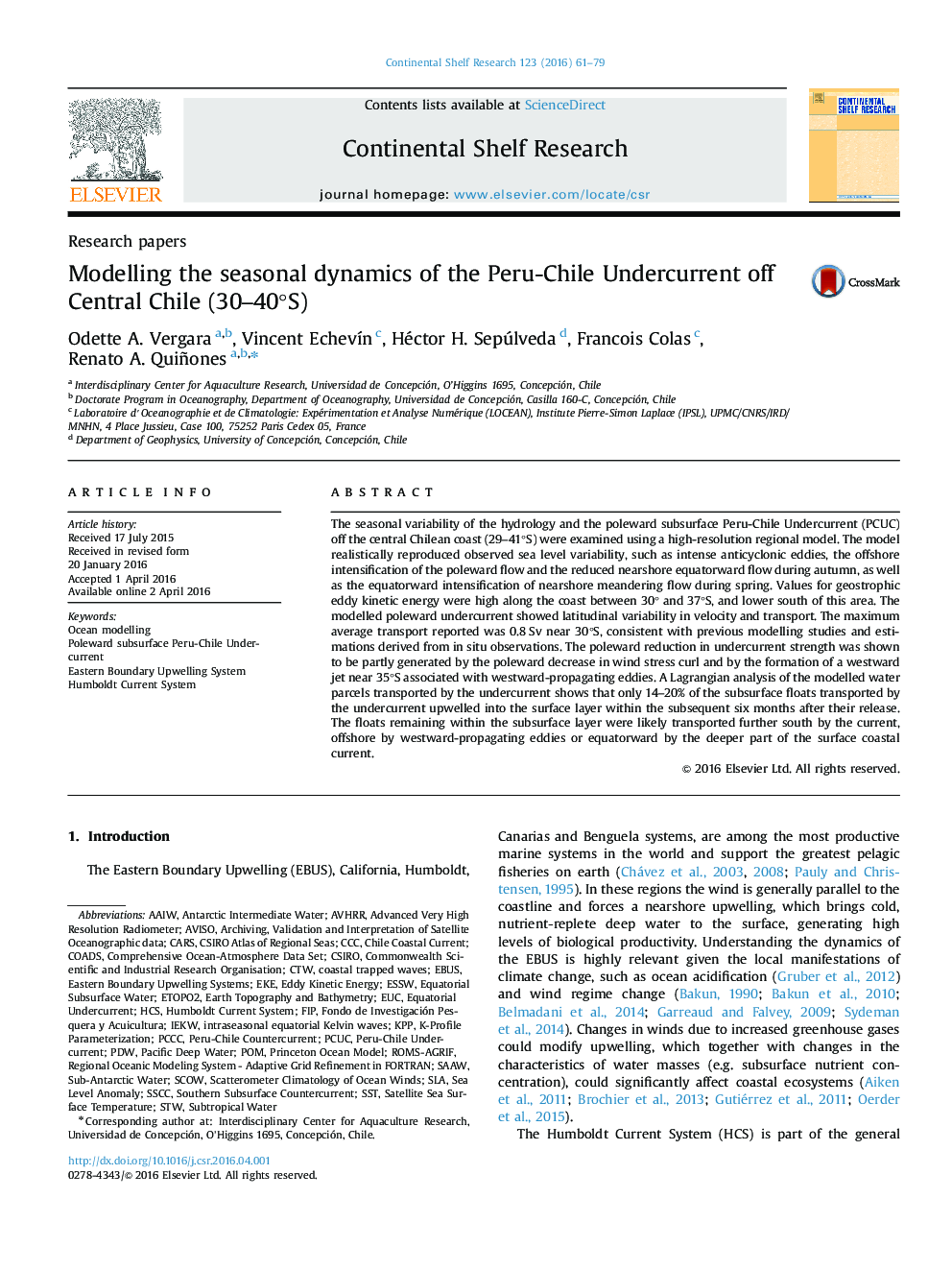| کد مقاله | کد نشریه | سال انتشار | مقاله انگلیسی | نسخه تمام متن |
|---|---|---|---|---|
| 4531554 | 1626090 | 2016 | 19 صفحه PDF | دانلود رایگان |

• We analysed the Peru-Chile Undercurrent using a ROMS model.
• The results were validated using observations from the Eastern South Pacific Region.
• Poleward decrease in wind stress curl reduces PCUC strength.
• There is a deepening of the maximum velocity nucleus of the Peru-Chile Undercurrent.
• Less than 20% of the particles transported by the undercurrent upwell after 6 months.
The seasonal variability of the hydrology and the poleward subsurface Peru-Chile Undercurrent (PCUC) off the central Chilean coast (29–41°S) were examined using a high-resolution regional model. The model realistically reproduced observed sea level variability, such as intense anticyclonic eddies, the offshore intensification of the poleward flow and the reduced nearshore equatorward flow during autumn, as well as the equatorward intensification of nearshore meandering flow during spring. Values for geostrophic eddy kinetic energy were high along the coast between 30° and 37°S, and lower south of this area. The modelled poleward undercurrent showed latitudinal variability in velocity and transport. The maximum average transport reported was 0.8 Sv near 30°S, consistent with previous modelling studies and estimations derived from in situ observations. The poleward reduction in undercurrent strength was shown to be partly generated by the poleward decrease in wind stress curl and by the formation of a westward jet near 35°S associated with westward-propagating eddies. A Lagrangian analysis of the modelled water parcels transported by the undercurrent shows that only 14–20% of the subsurface floats transported by the undercurrent upwelled into the surface layer within the subsequent six months after their release. The floats remaining within the subsurface layer were likely transported further south by the current, offshore by westward-propagating eddies or equatorward by the deeper part of the surface coastal current.
Journal: Continental Shelf Research - Volume 123, 15 July 2016, Pages 61–79